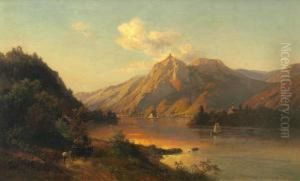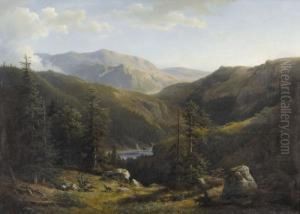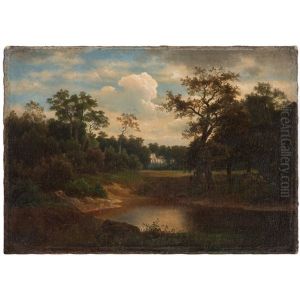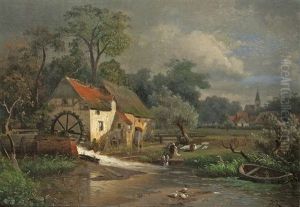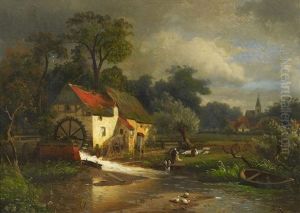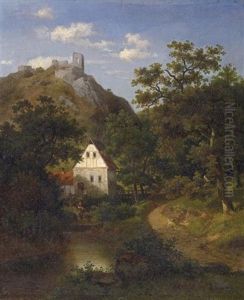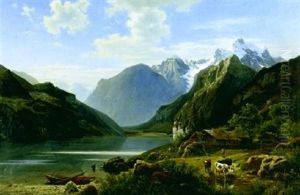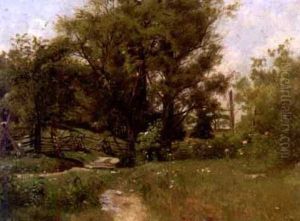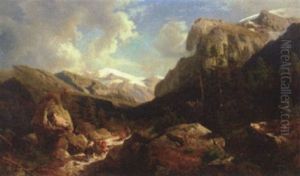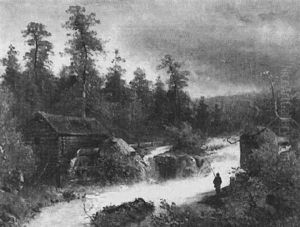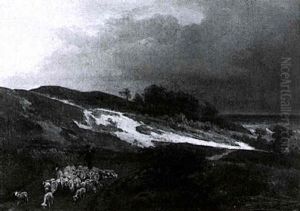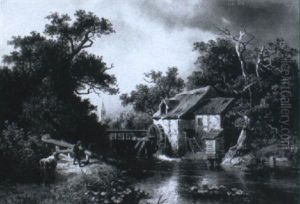John Robinson Tait Paintings
John Robinson Tait was an American painter, primarily known for his landscapes, who was born on January 14, 1834, in Cincinnati, Ohio. His artistic potential was evident from a young age, and he pursued his interest in art through his education. His early years coincided with the burgeoning American art scene of the 19th century, which was characterized by a growing interest in capturing the American landscape and the spirit of the nation through art.
Tait's education in the arts began in his hometown, but his pursuit of artistic excellence led him across the Atlantic to Europe, which was a common practice for American artists of the time who sought the rich artistic traditions and training available there. He studied at the Düsseldorf Academy, a hub for American artists, under the tutelage of Emanuel Leutze, a painter known for the famous work 'Washington Crossing the Delaware'. Tait also spent time in Munich and Paris, absorbing the influences of European art, particularly the Barbizon school, which emphasized naturalism and the beauty of the natural world.
Upon returning to the United States, Tait settled on the East Coast, where he continued to work and exhibit his landscapes. His works often depicted the serene beauty of the American countryside and reflected the influence of the Hudson River School, a movement that prized the idealized portrayal of nature. Tait's paintings were characterized by their attention to detail, atmospheric effects, and the play of light and shadow, demonstrating his skill and the influences of his European training.
Throughout his career, Tait was active in the American art community, exhibiting his works at important venues such as the National Academy of Design and the Pennsylvania Academy of the Fine Arts. His landscapes not only captured the picturesque qualities of the American terrain but also sometimes included historical or literary themes, adding a narrative depth to his work.
John Robinson Tait's contribution to American landscape painting continued until his death on August 29, 1909, in Bailey Island, Maine. His body of work remains a testament to the rich tradition of 19th-century American art, capturing the essence of the American landscape and contributing to the cultural heritage of the nation.
